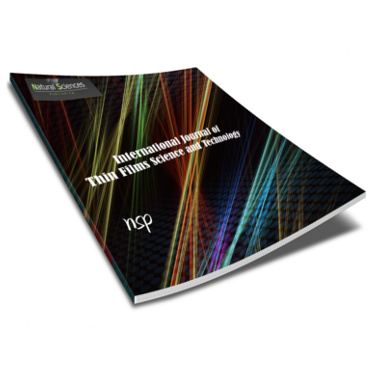International Journal of Thin Film Science and Technology

Abstract
Calcium magnesium silicate was synthesized via sol-gel route using calcium carbonate (CaCo3), magnesium carbonate (MgCo3) and Stenotaphrum secundatum grass extract (in place of tetraethylorthosilicate - TEOS) as a starting materials. The x-ray diffraction (XRD), Fourier Transform Infra-Red Spectroscopy (FTIR), UV Visible (UV-Vis), Photoluminescence’s (PLs) as well as scanning electron microscopy (SEM) and energy dispersive x-ray spectroscopy (EDX) were used to study the phase composition, functional groups identification, absorption spectra determination, examining excitation and emission spectra, surface morphology /microstructure and elemental composition analysis or mapping of the calcined product. The XRD analysis shows that the synthesized samples have tetragonal Calcium Magnesium Silicate - akermanite structure. FTIR confirmed the existence of the functional groups by (Si-O-Si, Si-O, O- Ca-O, O-Mg-O, SiO4, Ca2+, Mg2+) symmetric stretch, asymmetric stretch, vibrational mode and bending mode in the synthesized samples. UV-Vis revealed the occurrences of maximum absorption at wavelength of 280 nm and it increases in intensity with increasing its Nb5+ concentration. PL also shows maximum emission at excitation wavelength of 280 nm at wavelength of 564 nm with emission intensity of 866 a.u. for concentration of 1.0 % Nb5+. In PL analysis, we observe the intensity of emission increasing with increasing concentration of Nb5+. SEM images shows that surface microstructures have porous, flux structures and EDX analysis confirmed the presence of all the constituent elements.
Recommended Citation
H. Didu, Solomon; M. Woldemariam, Menberu; and G. Debelo, Nebiyu
(2023)
"Green Synthesis of Niobium doped Calcium Magnesium Silicate Phosphor Using Stenotaphrum Secundatum Grass Extract,"
International Journal of Thin Film Science and Technology: Vol. 12
:
Iss.
2
, PP -.
Available at:
https://digitalcommons.aaru.edu.jo/ijtfst/vol12/iss2/5

